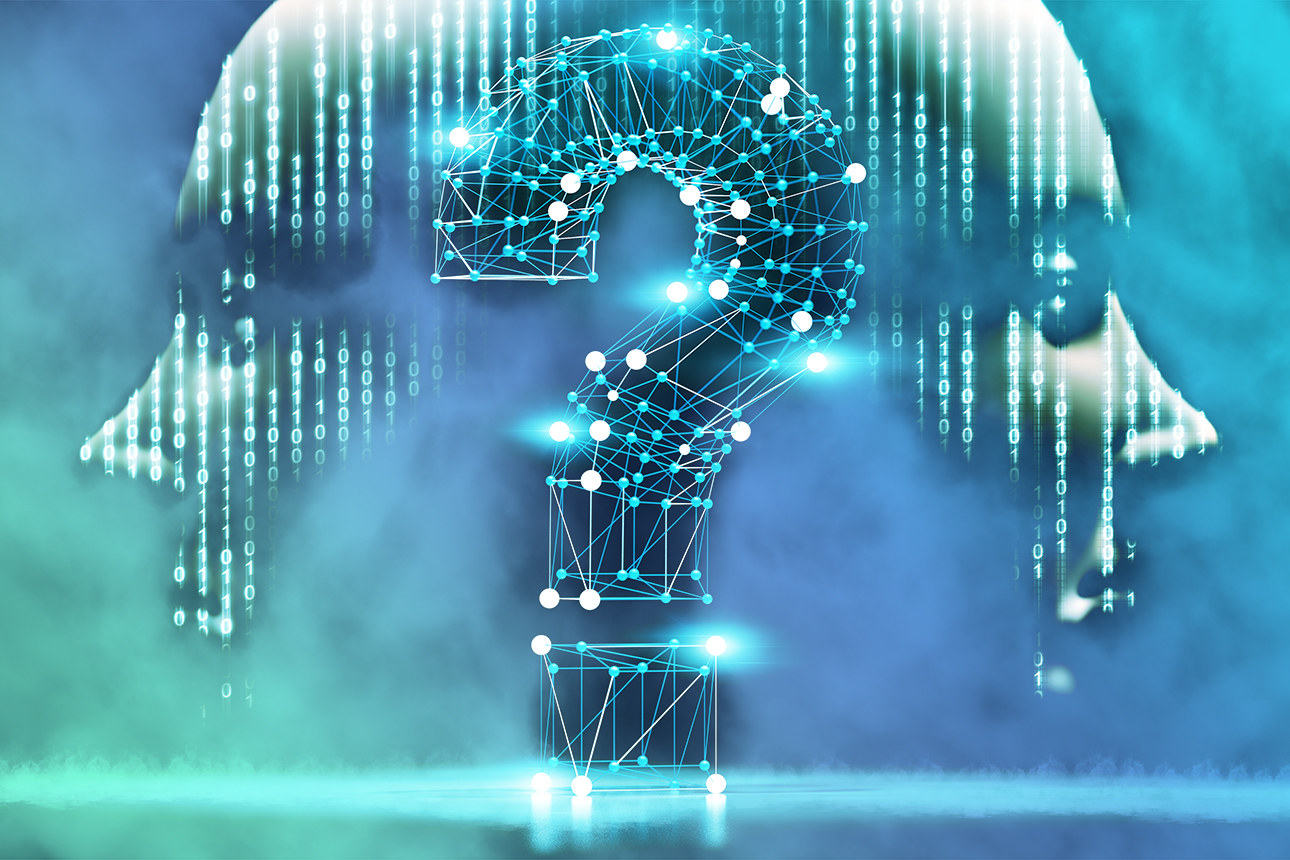Machine Learning (ML) isn’t just another buzzword; it’s an artificial intelligence revolution reshaping the business landscape. Experts are already speculating that machine learning will change the future of the workforce. As decision-makers and thought leaders, understanding ML isn’t just about technological curiosity—it’s about strategic advantage. For example, 35% of companies currently report using AI in their businesses, while 42% are exploring AI’s potential uses.
Machine learning has implications for many business types. But just what is machine learning, and how might it impact your future work? This article provides a beginner’s tutorial on machine learning, explains how it works, and reveals some fields it’s expected to impact.
What is machine learning?
Machine learning (ML) is a comprehensive term that refers to any computer science technologies that use algorithms to imitate the way the human brain learns information.
ML is a subset of AI, where computers are trained to learn from data, imitating human cognitive processes. In a business context, this means harnessing vast amounts of data for actionable insights, operational efficiency, and enhanced customer experiences. Its distinction from broader AI is crucial for leaders to comprehend, ensuring focused and meaningful adoption.
Types of machine learning
Just as it’s important to distinguish machine learning from other types of AI, it’s also important to differentiate the varied machine learning methods. There are four main types:
- Supervised machine learning. This type of machine learning uses labeled datasets to finetune algorithms. The algorithms can then classify data or predict outcomes. As new data is fed into the system, it adjusts to become more accurate. As leaders, think of this as guiding your team with clear instructions and objectives.
- Unsupervised machine learning. Unsupervised learning uses algorithms to analyze and organize unlabeled datasets (versus labeled datasets, as in supervised ML). The algorithms are designed to identify similarities and differences in the data and cluster it according to patterns. There’s no human prep work needed (versus in supervised ML, where people work as classifiers to label datasets).
- Semi-supervised machine learning. Semi-supervised learning strikes a balance between supervised and unsupervised ML. The system is trained using smaller labeled datasets (supervised) before it’s used to extract data from larger, unlabeled sets. This mixed format is useful if there isn’t enough labeled data to support a supervised learning algorithm.
- Reinforcement machine learning. Reinforcement learning is similar to supervised learning. However, the key difference is that the algorithm isn’t trained with sample data. Instead, the model uses a trial-and-error approach to learn as it goes.
How machine learning works
Regardless of the method, ML’s underlying principle for executives remains consistent: the extraction of actionable insights from data. Leaders must comprehend the iterative nature of ML: algorithms make predictions, assess their accuracy, and then refine. Overfitting and underfitting—akin to over-specializing or being too generic—are pitfalls to be avoided.
The machine learning system uses an automation error function to gauge prediction accuracy, aiding in model optimization. Through continuous evaluation and updates, the system minimizes errors in an ongoing validation process, enhancing accuracy.
Gradient descent optimizes the algorithm within the system, helping prevent overfitting or underfitting of the training data. Overfitting occurs when a model precisely matches its training data, while underfitting happens when it fails to capture the input-output relationship in a dataset, both impacting accuracy adversely.
Human intervention in machine learning varies; supervised machine learning needs humans for labeled datasets, unlike unsupervised machine learning. Some subsets, like deep machine learning systems, autonomously categorize data, reducing human intervention, and expediting data mining and data analysis.
Key concepts and terminologies
As you learn more about machine learning, you’ll likely encounter some new terms you aren’t familiar with. While diving deep into technicalities might be reserved for specialists, executives need a grasp of key terms to make informed decisions:
- Artificial neural networks. Artificial neural networks (ANNs) consist of artificial neurons or nodes that connect to one another and send data throughout the network. Think of this as your organization’s structure, each node representing a department, communicating and processing information.
- Dataset and data points. In machine learning, datasets refer to collections of data (information) that are used to train the ML model. A single dataset consists of many individual data points. These are your market research, sales figures, and customer feedback, crucial for decision-making.
- Training data. Training data is the data used to train a machine learning algorithm to accurately predict outcomes. For example, for image recognition, training data may consist of previously labeled images.
- Input versus output data. Machine learning models run on independent variable inputs, which help to create dependent variable outputs. The input data is the initial data that’s entered into the system.
- Labeled versus unlabeled data. Labeled data comes with clear tags, like categorized market segments, while unlabeled is raw, unprocessed information.
- Deep learning. An advanced subset of ML, akin to specialist teams with deep expertise.
- Machine learning models. Machine learning models can “learn” in different ways — supervised, unsupervised, semi-supervised, and reinforcement. These are all different models of ML.
- Machine learning algorithms. Machine learning relies on algorithms, which are used to classify information and predict outcomes. For example, natural language processing algorithms can support speech recognition in various languages, from English to Spanish (like Alexa).
- Dimensionality reduction. Dimensionality reduction refers to a process that reduces the number of features in a given dataset. This helps improve accuracy over time.
- Gradient descent. This is the optimization process, akin to refining business strategies for best outcomes.
- Overfitting. Overfitting occurs when a statistical model matches its training data exactly. When this happens, the algorithm can’t perform.
- Underfitting. Underfitting occurs when a data model can’t accurately capture the relationship between the input and output variables in a dataset. As a result, the algorithm experiences a high error rate.
- Subset selection. Subset selection refers to the process of identifying irrelevant or repetitive information from datasets. This data can then be removed to enhance accuracy.
Machine learning tools and libraries
If you’re just getting into machine learning, there are many tools available to help you master the basics. Here are some of our favorite platforms to further your self-education:
- Microsoft. The software developer offers a handy introduction to machine learning. The 52-minute module provides a high-level overview of machine learning, suitable even if you aren’t a data scientist and don’t have a computer science background.
- TensorFlow. TensorFlow is an open source machine learning platform designed for everyday use. This is also a great place to learn about the basics of machine learning — see this starter curriculum for programmers.
- IBM. The computer giant has a huge database of machine learning libraries, frameworks, and tools that can be used to train and deploy ML models. Check out this list of supported technologies to get started. You can also check out IBM’s Watson plus Python machine learning samples.
Industries impacted by machine learning
Machine learning is already being implemented in many industries. Here are some of the ways ML is changing the working world:
- Finance. Banks and other financial institutions can use machine learning to improve fraud detection. Algorithms are trained in pattern recognition, so they can identify out-of-the-ordinary activity that’s deemed suspicious.
- Healthcare. Machine learning can be used in medical diagnoses. For example, to improve radiology imaging diagnostics, a machine can take one image and then compare it to thousands of others, looking for similarities to help determine a diagnosis.
- E-commerce. E-commerce platforms like Amazon can use machine learning to create personalized recommendations for shoppers — find out more in the example in the next section.
- Customer service. Machine learning is great at training chatbots to improve customer service. This helps to alleviate the burden on human agents.
- Marketing and advertising. Marketing tools like social media can leverage machine learning to create more targeted advertisements.
Real-world applications of machine learning
A look at some of the ways machine learning is already being used to harness massive amounts of data can make it easier to understand its implications for business life. We highlight two use cases below.
Amazon‘s Personalized Recommendation Engine
Have you ever bought something on Amazon and then gotten recommendations for similar or related items to buy?
For example, maybe you bought a smoothie blender — and then got recommendations for protein powders. That’s thanks to machine learning. The algorithm looks at customer data sets to see what other people who bought that smoothie blender also bought, and then tailors the recommendations accordingly.
Netflix and Content Segmentation
When you open Netflix, you’ll see categories of content to choose from. That content is organized using machine learning. For example, you’ll have a cluster of romantic comedies versus horror movies versus 1990s classics.
Netflix also recognizes your watching history and provides recommendations accordingly. If you love a good true crime flick, for example, you’ll start getting true crime documentary tips.
Future trends and challenges in machine learning
The pace of machine learning’s evolution is staggering, from generative models to big data advancements. For leaders, staying updated isn’t just beneficial—it’s essential. At IMD, we bridge the gap between innovation and leadership.
We provide programs that cover everything from digital transformation to AI and data science initiatives. Ensure you’re not just part of the ML revolution, but leading it.
Get the latest digital transformation content in your inbox 💌




